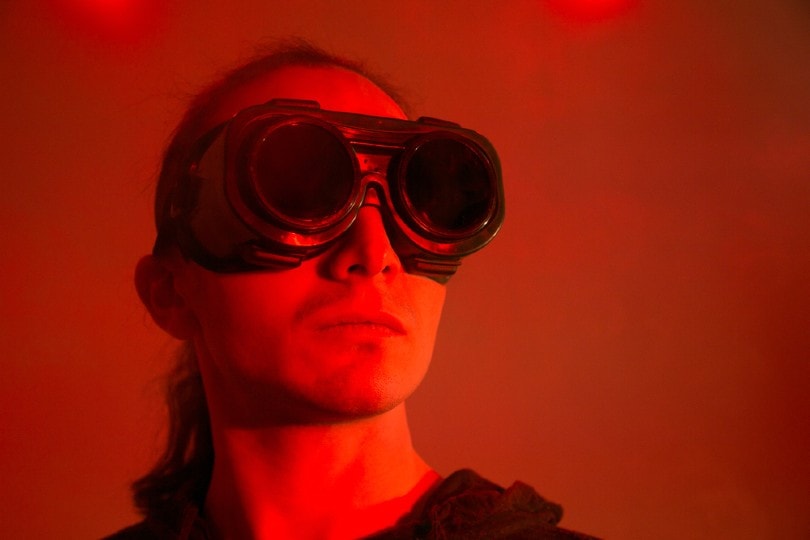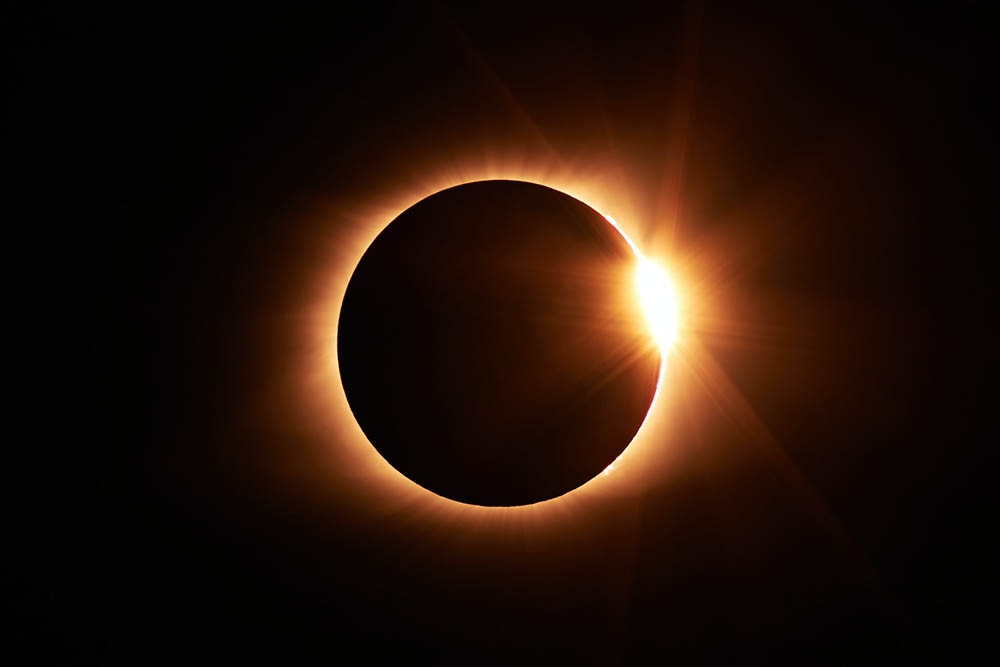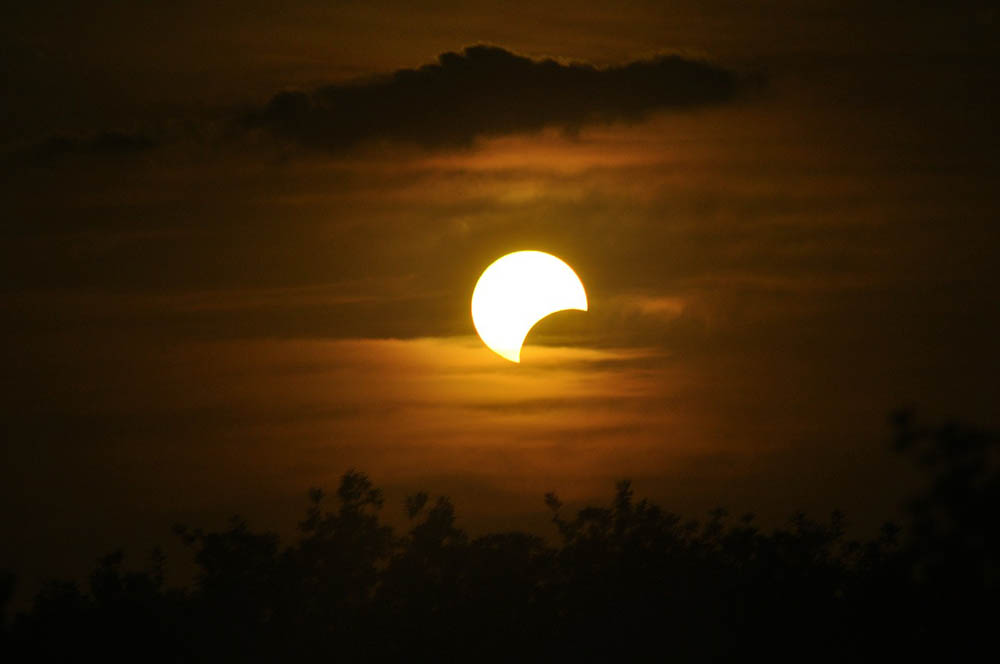Can You Look at a Solar Eclipse With Welding Goggles?
Last Updated on

Solar eclipses rarely occur, so when you do get the opportunity to see one, you probably don’t want to miss it. But, if you’re tempted to use a pair of welding goggles to look up at the astronomical wonder, then stop and check the filter shade number on your goggles first. You can only view a solar eclipse safely with welding goggles that have a filter shade number of 12 or higher. Do not look at a solar eclipse with welding goggles that have a lower number than 12.
Even then, some people may find a filter shade number 12 too bright for their eyes.

But what if you don’t have the right shade number on your welding goggles? Luckily, there are other ways to experience a solar eclipse safely. Keep reading to learn about some of the safest and most common ways to look at a solar eclipse.
Why Do You Need to Protect Your Eyes During a Solar Eclipse?
Looking directly at the sun, during an eclipse or otherwise, can cause irreparable damage to the light-sensitive cells in your retina (the back of your eye). This condition is called solar retinopathy, or “eclipse blindness”, and symptoms range from blurry vision and headaches to blindness.
In most cases vision will be restored over 3-6 months, however long-lasting damage can occur.
The condition usually doesn’t cause any pain, and symptoms may start days or even weeks after the event. Therefore, it is important to always wear the correct protective eyewear.

What Kind of Eyewear Is Needed for Viewing a Solar Eclipse?
Solar eclipse glasses have special filters that are compliant with ISO 12312-2 safety standards. They block harmful UV rays from the sun and make it safe to view a solar eclipse.
There are, unfortunately, many glasses sold online described as solar eclipse glasses, which do not meet the adequate requirements for protecting your vision. The American Astronomical Society has a list of reputable manufacturers of solar filters and viewers that comply with international safety standards.
Do Solar Eclipse Glasses Expire?
According to guidance from NASA, as long as the filters on your glasses remain unscratched, unbroken, and in pristine condition, you may keep them and use them indefinitely, providing they are ISO 12312-2 compliant.

What Can I Use Instead of Eclipse Glasses?
It’s not always easy to come by a pair of solar eclipse glasses. Luckily, there are other ways of viewing a solar eclipse safely.
- Make a pinhole projector – this is one of the easiest, safest, and most inexpensive ways to experience a solar eclipse. You won’t view the eclipse directly with your eyes, instead, you will have your back to the sun, and the solar eclipse will be projected onto a piece of card or paper in front of you. The simplest pinhole projector only requires 2 paper plates (or pieces of card), some aluminum foil, and a pin!
- Telescopes and Binoculars with solar filters – Looking at the sun through binoculars or a telescope without a solar filter can cause irreparable damage to your eyes. But one of the best ways to view a solar eclipse is up close through a telescope, or through binoculars fitted with the correct solar filter. Astronomy stores often stock solar filters, ideal for viewing sunspots as well as solar eclipses.

Can You Look At a Solar Eclipse Through Your Phone?
You should still wear the correct solar eclipse glasses, even if you are planning on watching it through the screen of your smartphone. The light from the sun can be bright enough to burn the pixels in your smartphone screen, however. For this reason, we advise that you use a solar filter for your smartphone camera, before pointing it at the sun.
With a good pair of solar eclipse glasses and a solar filter to cover the lens of your phone camera, you can record a high-def video, or take photographs of the solar eclipse without running the risk of damaging your phone, or your eyes.

Conclusion
Solar eclipses happen only a handful of times every year, and they will only be viewable from certain locations. They make for a wonderful sight, providing you view it safely. Only welding goggles with a shade filter number of 12 or higher will provide you with adequate protection against the sun.
Nasa provides a list of upcoming eclipses, so you can prepare ahead of time and enjoy this very rare but beautiful astronomical wonder!
See also:
Featured Image Credit: Evgenia Khomenko, Shutterstock
About the Author Cheryl Regan
Cheryl is a freelance content and copywriter from the United Kingdom. Her interests include hiking and amateur astronomy but focuses her writing on gardening and photography. If she isn't writing she can be found curled up with a coffee and her pet cat.
Related Articles:
Can You Use Binoculars to Look At Stars? How to Choose the Right Pair
15 Crucial Facts About Ultraviolet Rays & the Sun
What Constellation Is Spica In? The Interesting Answer!
10 Interesting Leo Constellation Facts, Myths, and FAQs
15 Interesting Pegasus Constellation Facts, Myths, and FAQs
6 Interesting Sagittarius Constellation Facts, Myths, and FAQs in 2024!
What Are Constellations? Where Did They Come From?
8 Interesting Libra Constellation Facts, Myths, and FAQs
